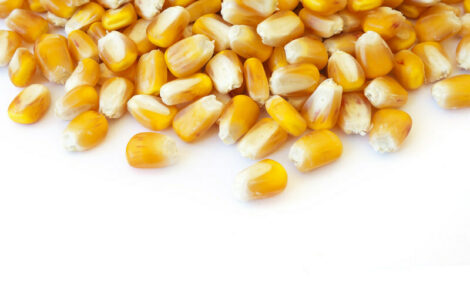



Influence of Ultimate pH on Meat Quality and Consumer Purchasing Decisions
By Ronald Klont, PIC’s Northern European Pork Chain Manager - Ronald Klont defines the relationships between ultimate pH and four of the five meat quality attributes that impact consumer purchasing decisions - taste, appearance and juiciness.
What is Meat Quality?
Factors such as juiciness, tenderness,
taste, appearance, price, package
appearance, colour, size, brand name and
food safety all influence consumer
decisions to purchase meat in the retail
store. Consumers’ behaviour is
influenced by several questions: When I
cook this product, is it going to taste good?
What about the tenderness and juiciness?
Is the product free from contamination?
Does the product look good?
Research shows that the top five attributes
that influence consumer decisions are
taste, tenderness, food safety, appearance,
and juiciness. Taste, tenderness, and
juiciness are attributes that are influenced
by past experiences. Was this product
tender the last time I purchased it? Was it
juicy? Another important attribute is
appearance. It includes packaging, cut
size, meat-case lighting and amount of
juice released, but mostly colour of the
meat. It is considered one of the most
important properties that consumers use
to judge meat quality.
 According to meat scientists, factors such
as ultimate pH, colour, water-holding
capacity, and intramuscular fat, are the
main technical attributes that drive
consumer purchasing decisions.
According to meat scientists, factors such
as ultimate pH, colour, water-holding
capacity, and intramuscular fat, are the
main technical attributes that drive
consumer purchasing decisions.
What is Ultimate pH and how does it influence Meat Quality?
The pH of muscle/meat is a
measurement of acidity. In a normal
living muscle the pH is approximately 7.2.
Glycogen is broken down to lactic acid
when muscle turns into meat. The pH of
meat can range from 5.2 to 7.0. The
highest quality products tend to fall in the
pH range of 5.7 to 6.0. Both the rate and
extent of post-mortem pH fall will
influence pork quality characteristics.
Pale, Soft, and Exudative (PSE) pork
commonly results from a rapid
breakdown of glycogen into lactic acid
after slaughter. This rapid pH fall can be
seen in pigs carrying the halothane gene
(stress gene).
The ultimate pH is determined by the
extent of the pH decline at 24 hours after
slaughter. The variation in ultimate pH
influences factors such as colour and the
ability of the meat to retain water. A low
ultimate pH results in meat proteins
having decreased water-holding capacity
and a lighter colour. Conversely, a higher
ultimate pH will give a darker colour and
less drip loss. Figure 1 (opposite) shows
the relationship between ultimate pH
and the amount of drip loss in a
halothane-gene-free pig population.
For slaughterhouses and further
processors, a lower ultimate pH will lead
to less saleable product, due to increased
drip losses during the production
processes of fresh meat and/or cooked
pork products. Drip loss in a consumer
package will negatively affect the
appearance and thereby the purchase
intent. Ultimate pH also impacts eating
quality characteristics such as juiciness,
tenderness, and taste. Pork with a higher
ultimate pH, which retains more water
during storage, will also keep more juice
after preparation of the meat. More juice
in the prepared meat will give a juicier,
more succulent and tender eating
experience (see Table 1 above).
How can Genetics and Gene Markers influence ultimate pH and Pork Quality?
Environment, genetics and the
interactions between both factors will
influence the extent of pH fall. Longer
times of feed withdrawal, before
transport for instance, will decrease the
amount of glycogen present in the
muscle at slaughter; thereby resulting in a
higher ultimate pH. There are differences
in ultimate pH between and within
different pig breeds. An extreme breed,
like the Berkshire, is known to have a
higher ultimate pH than other more
commercial breeds. It is possible,
however, to genetically increase the
ultimate pH of modern pig breeds by
using this trait in the selection procedure
for commercial parent boars and gilts e.g.
in PIC’s terminal 280 sire, a pure red
Duroc line - lean and efficient with high
meat quality.
The use of gene marker technology is a
powerful tool to increase ultimate pH
(and other meat quality traits) in a pig
population. The RN gene is an example of
a major gene which influences ultimate
pH. Two copies of the negative allele (22)
cause an extreme low ultimate pH ("acid
meat") and most of the breeding
companies have erased the negative
allele from the breeding herds.
Researchers are constantly searching for
DNA variation that is associated with
variation in meat quality traits. Once
these associations are identified, young
animals can be tested for their potential
to deliver better quality meat, before they
are tested for traditional traits such as
growth rate. Sygen has developed a series
of DNA markers that can be used to
improve meat quality attributes, such as
pH, colour and tenderness, to increase
the accuracy and speed of genetic
improvement. Selection of the right
genotypes, based on multiple DNA
markers, can shift a pig population from a
low to high ultimate pH and thereby
decrease drip losses.
Selection for greater meat quality
characteristics does not necessarily result
in a higher cost of production. Extremes
do exist within the rare breeds, such as
Gloucester Old Spot, Tamworth or
Berkshire, that provide exceptional meat
quality, but at a cost of poor efficiency
and low overall lean. But by using a
tailored selection index, DNA marker
technology and good on-farm nutrition,
meat quality can be greatly enhanced
within efficient, fast-growing and lean
commercial lines. Ultimate pH is an
important meat quality characteristic
and the aim is to optimize pork quality
whilst continuing to improve the cost of
production for different market
requirements.


Source: PIC UK - June 2005








